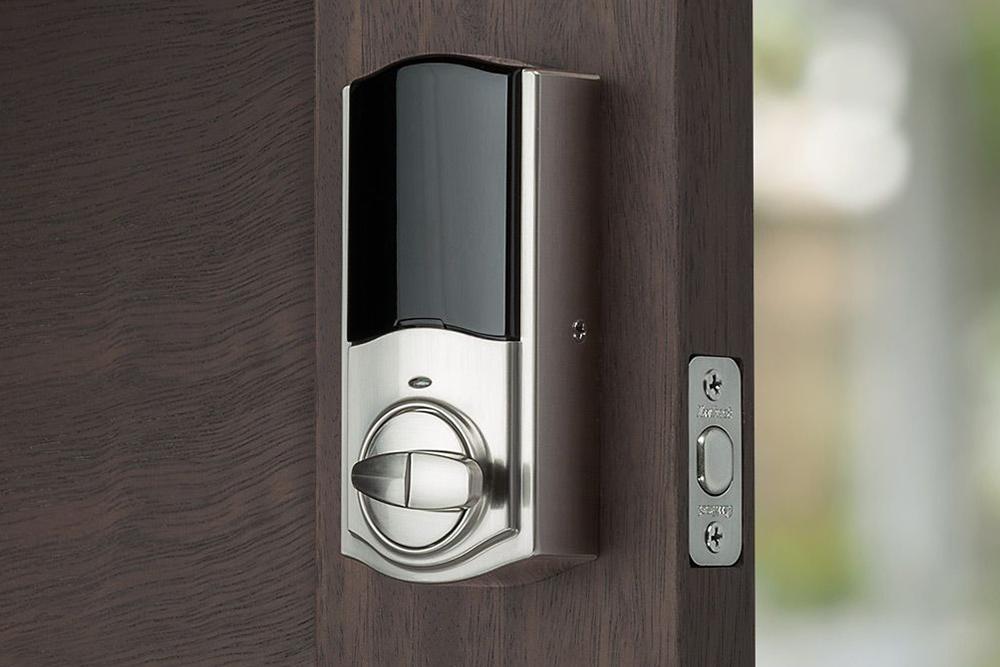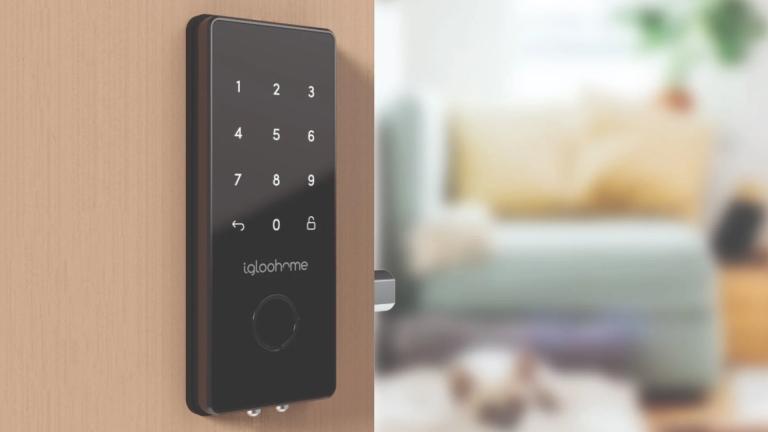Best smart locks 2021: secure your home with smart Yale locks, deadbolts and more
All the best features, news, tips and great deals to help you live a better life through technology
Contact me with news and offers from other Future brandsReceive email from us on behalf of our trusted partners or sponsorsThank you for signing up to T3. You will receive a verification email shortly.
There was a problem. Please refresh the page and try again.
By submitting your information you agree to the Terms & Conditions and Privacy Policy and are aged 16 or over.Jump straight to:The best smart deadboltThe best smart multi-point lockThe best smart euro cylinder lockThe best smart night latch
All the best smart locks are here in our comprehensive T3 guide, so if you're shopping for these particular smart home devices then we've got you well covered – no matter what your budget or requirements, you'll find something that appeals in our detailed list.
With one of the best smart locks installed, you can (virtually) change the locks to your home anytime you like: no switching of cylinders, no trips to the hardware store, no new set of keys... instead, a few taps on the accompanying smartphone app and you're all sorted.
Unusually, at least in the company of the locks we've tested, the Igloohome Deadbolt 2S comes with everything (bar tools) which includes the actual bolt portion of the lock. That makes it a great DIY addition to an existing door, one which doesn't necessarily require the existing lock to be hacked about or removed.
It's easy enough to install, though the included instructions aren't tremendously detailed, and the online video guide, while sharp enough, does leave a couple of aspects a little muddy. We didn't struggle, put it that way, though it did take an hour and a half to get everything perfect.
The Deadbolt 2S is, it's fair to say, absolutely gorgeous, with a super-slim front panel on the outside of the door and a rather heftier (but not unattractive) locking box on the back. The light-up PIN panel disappears when not in use, only illuminating when a palm is pressed on it; there are confirmatory beeps when numbers are pressed and codes correctly (or incorrectly) entered.
Through the front panel you can gain access via a PIN code, a Bluetooth key, or even (once you've pulled off the circular cover) a traditional key in case of emergency, the latter of which uses a tough-to-pick four-sided dimple lock for extra security. There's a sensor included, which detects a simple stick-on magnetic module on the door frame to automatically lock the deadbolt when your door is shut. That's very neat, and the timing of it can be customised in-app.
About the Igloohome app, then: it is excellent. It's particularly well presented, making management of PIN codes for limited or permanent access a breeze, and you can use it to generate Bluetooth keys and send them on even when you're out of range of the unit itself. That's management gold, and easy enough for even first-timers to use. Igloohome's Airbnb integration is an extra bonus, enabling you to line up keys for all of your forthcoming bookings automatically.
If you're looking to add a smart lock to an existing door, this is the best smart lock. It looks great and we found it to work flawlessly; we can't think of a better option whether you're administering it from near or far.
Multi-point locks: for front doors with serious security
A multi-point lock is built into the structure of a door, providing multiple bolts which engage with the frame when the lock is activated. If you have a UPVC front or back door, you likely have a multi-point lock; they're not common elsewhere, but if you have to pull the handle up before you can turn the key to lock the door that's another good indicator.
Multi-point locks offer good protection against forced entry, and they generally only need a single key to get them locked up. But realistically a multi-point mechanism does mean you're rather limited in terms of your smart lock options. It's not as if you can just whip out a drill and drop in a deadlock. The only real option, save for ripping out the whole door and potentially all the fittings around it, is to replace the handle assembly with something smarter.
T3's best multi-point smart lock pick
Lock type: Multi-pointPower: 4x AABattery backup: 9vUnlock methods: NFC, Bluetooth+Quick installation+Solid construction+Front door friendly-Iffy app• Read our full Yale Conexis L1 review

Hardware-wise, the Yale Conexis L1 lands sure-footed in a great place. It's hefty and handsome, with a thick (and rather stiff) handle which has a pleasant springiness to it. There's no keyhole, so it's entirely pickproof; the Conexis L1 uses NFC tags and cards (one of each included) as well as Bluetooth to unlock.
It's an impressively straightforward 20-minute replacement for just about any existing multi-point lock, with simple enough instructions and fully adjustable mounting making it a breeze to get screwed on however your holes are currently configured.
And the hardware itself doesn't just look good, it works really well. In place of the standard euro cylinder lock is a thin, internal latching cylinder, entirely hidden withing the centre of your door so it's impossible to reach from the outside. Pull up the handle and the Conexis L1 both engages your multi-point locking mechanism and clicks the cylinder over to its locked mode. Unlocking is a case of bringing an NFC tag close to the receiver on the outside of the lock, using Bluetooth through the app, or pressing in and twisting the thumbturn on the inside of the door.
The Conexis L1 tells you its status via a series of ear-splitting beeps; necessary, we suppose, but they could be a little more pleasant. They come in extra-handy when the battery is running low – you can't miss the alert – particularly because there's no way to see the current battery level through Yale's mobile app.
That app. Oh, that app. It's really pretty mediocre. Functionally, it does allow things like sharing Bluetooth keys with others, with a small number provided with the lock and additional keys available for around £2 each, and you can (after some fiddling) use it to unlock your door just fine. But it's rudimentary at best, clunky at worst, and it doesn't appear to be available on international app stores meaning this could be a problematic addition to holiday lets if you expect foreign visitors.
The Conexis L1 is extensible to fit your smart home kit; there's an add-on module which connects the L1 to Yale's home alarm system, along with both a Z-Wave module compatible with Samsung's SmartThings system and one for Yale's own smart home hub, the latter two of which let you passthrough control to Wi-Fi for remote operation as well as Bluetooth control.
Euro cylinder locks: flexible barrels inside the door
Euro profile cylinders can be found on all sorts of doors. They're compact barrels which run through the door, with the key turning a latch in the centre that actuates the mechanism of a mortice case or the locking catch of a multi-point lock. On outer doors, the internal side of a euro cylinder will sometimes swap the key out for a thumbturn, which allows the cylinder to be locked without the need for a key.
T3's best euro cylinder smart lock pick
Lock type: Euro cylinderPower: 4x AABattery backup: N/AUnlock methods: Bluetooth, button, manual+Easy installation+Versatile compatibility+Proximity unlocking-Removal exposes your keyStretching the definition of a smart lock but still doing its job, here comes the Nuki Smart Lock 2.0, a weird thing which could either, depending on your situation, be incredibly useful or offer no benefit whatsoever.
Installation is as easy as it comes, requiring either three set screws to be clamped to the head of a euro cylinder lock, or a sticky pad to be stuck to your door if your lock doesn't happen to protrude far enough. The former option, while pretty sturdy, does leave the Nuki Smart Lock 2.0 looking rather precarious, dangling as it does.
You'll want a very specific kind of euro cylinder, too. You can technically install it on a multi-point locking door, but its automatic locking functions won't work unless you've lifted the handle to engage the latches. You'll also need a fairly deep-set mortice, because the unit itself is pretty bulky; several doors we tried this on did not offer enough clearance between the Nuki unit and the door frame.
Finally, it's important to install this on a euro cylinder which can be locked and unlocked with a key inserted in both sides, because it requires you to have a key inserted at all times. The noisy unlock mechanism literally turns that key (or a thumbturn, with an optional accessory) for you. You can trigger the process via the decent Nuki app, over the internet if you also install the Nuki Bridge, by pressing the button on the front of the device, or just by turning its collar.
This is a device of convenience rather than any kind of serious security. Indeed, popping the Nuki Smart Lock 2.0 open takes a matter of seconds, at which point your key is exposed. Admittedly an intruder would have to know how to open it (or be malevolent enough to wrench the thing off the lock) but it's not something we'd recommend putting in a rental property for that reason.
Inside the home, though, we're really pleased with it. The Nuki Smart Lock 2.0 is a quick and easy way to make a lock smart, with a bunch of features that really do add a lot of convenience as long as you've met all the criteria. There's an auto locking function, and auto unlocking when you come into proximity with the lock. Add the Nuki Bridge and you'll be able to set up an alert if you've left the area without locking the door, or automate things using the likes of Alexa.
Night latch locks: convenient on-door latches
A night latch, also known as a Yale lock due to the company's ubiquity in their manufacture, is a surface-mounted lock suitable for wooden doors. It's the traditional first line of front door defence because a night latch, with its sprung catch, automatically secures the door when it's pushed shut.
You'll rarely see a night latch on its own; while they're convenient and common, their surface mounting leaves them open to brute force attacks. If your night latch isn't backed up by a second bolt, likely a deadbolt installed inside the door, it really should be.
T3's best night latch smart lock pick
Lock type: Night latchPower: 4x AABattery backup: 9vUnlock methods: NFC, PIN+No problem to install+Reassuringly tough+Tamper alarm-No Bluetooth-Remote management requires extra hardwareYale, by way of parent company Assa Abloy, knows a thing or three about night latches. Installing the Keyless Connected doesn't specifically demand Yale hardware on the other side, but you will either need an existing night latch or to purchase a new one to go along with it.
The process, as with Yale's multi point smart lock, isn't tricky in the least. One extra through-hole is required in the door, which covers both the top mounting point of the keypad and the power delivery to it from the battery pack mounted inside the door. The rest simply slots into place, with only a fiddly wiring connection slowing things down.
We were somewhat concerned about the lack of screws required to mount that front-facing box, but once it's installed it feels formidably tough. Tamper with it and someone's going to know about it fast, since there's an 80dB siren included that (we learned from experience) does tend to rouse the neighbours.
Like the Conexis L1, you can open the Keyless Connected with NFC cards or key fobs (one of each included), and there's also a pin pad for keyless entry. Access restrictions for both methods are configured on the pad itself; you can add up to 20 tags and 20 codes at once. There are time-limited codes, too, allowing you to set up access for a 24-hour period.
Entering a code or flashing a key fob doesn't automatically unlock the door: instead, it engages the connection between the Keyless Connected's knob and your night latch. Turn it (within a window that you specify), and you'll turn the latch on the other side. Without an unlock, the knob does nothing, so it can't be forced.
We must take slight issue with the 'Connected' part of 'Keyless Connected' because, at least out of the box, there's no connectivity to speak of. That's all provided by one of Yale's add-in modules, be it one which adds support for Yale's smart home system, Samsung's SmartThings platform, or a remote key fob. If this is something you're likely to want to administer from afar, you'll absolutely need one of the former two modules. Once they're installed, you'll be able to use Yale's rickety app to add and remove PIN codes for guests. Unlike the Conexis L1, there's no Bluetooth option here.
Niggles aside, the Keyless Connected is an impressive piece of hardware, and an impressively simple drop-in way to turn a regular night latch into a smarter one. You'll still need a second lock (such as a deadbolt) to secure overnight if you're using it on an external door, given the slight weakness of night latches in general, but it's otherwise a clever piece of kit that works very well.



